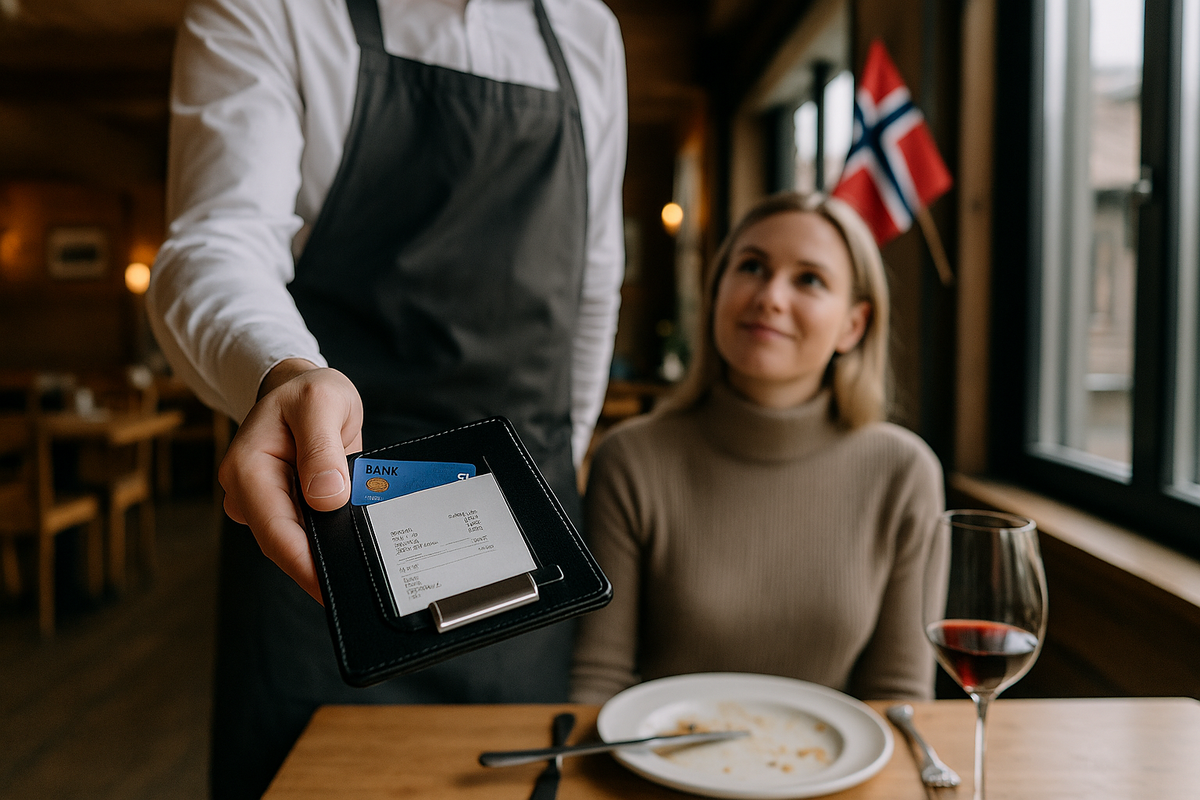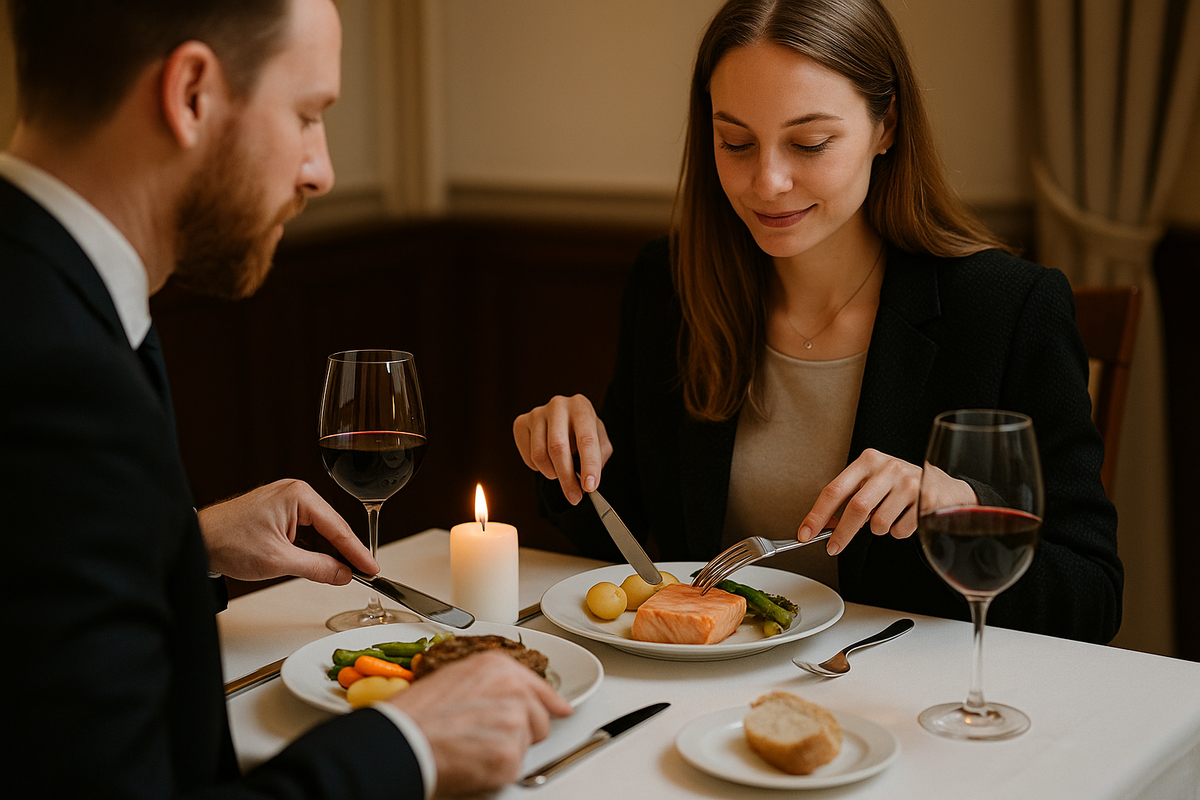Table manners in Norway: rules, etiquette and meal structure
Norway is a fantastic place to eat! Its food and dining culture is amazing, and it's all done in a really strict but totally understandable way. Here, as in other Scandinavian countries, it's not just the food itself that counts, but also the manners at the table. This is a fantastic way to show respect for your guests and your host! Master these rules and you'll be the life of the party, whether you're at a formal dinner, a business lunch or a casual get-together. In this article, we're going to take a detailed look at the basic rules of table etiquette in Norway, the importance of tipping and the typical structure of meals.

Here are some basic table manners you need to know when visiting Norway.
Norwegians like things to be simple and modest. This is also shown by how they behave at the table. Here are a few basic rules to help you behave like a local:
- You can use the cutlery. In Norway, it is common to use a knife and fork for the whole meal, even for foods that in other countries may be eaten with your hands. For example, people usually eat meat, potatoes and bread with these utensils, even if it does not require much effort.
- We had a nice chat. People usually chat informally during meals, but it's best to avoid talking about too personal or controversial topics. Norwegians don't like to talk about money, politics or religion at the table, especially if the meeting isn't personal.
- Good posture means sitting or standing up straight. It is considered important to have good posture at the table. Sit up straight, don't rest your elbows on the table, and hold your cutlery neatly — this shows respect for the people around you.
- Don't rush. In Norway, people don't rush when they eat. Lunches and dinners are often relaxed, with long chats and breaks between courses. If you rush to the table, it will look like you don't respect the rules.
The way food is served in Norway
The way people eat in Norway is also quite formal, especially when there are business or official meetings. Here is what you should expect:
- For breakfast, you can have: In Norway, breakfast is usually small and includes things like bread, cheese, cold meats and eggs, often with a cup of coffee or tea. Breakfast is an informal time when people often eat at home or in a café before starting their working day.
- Dinner: In Norway, dinner is a more important meal, usually eaten in the evening after work. The main course often includes fish, meat or potatoes, as well as fresh vegetables. When you go out for dinner, you often get a starter, soup, main course and dessert. This can be a formal or informal meal, depending on the situation.
- The table is for guests. When people have important meetings or events, there is a set order in which food is served. This starts with appetisers, followed by the main course and ends with dessert or coffee. The order in which food is served is very important, especially in posher restaurants.

How much should you tip in Norway?
You don't have to tip in Norway, as most restaurants already include a service charge (usually about 10%) in the bill. However, if the service was really good, you can leave a tip of 5-10% of the bill. In normal cafés or snack bars, you don't usually leave a tip, but if you thought the service was really good, it's fine to give a little extra money.
It is not common to leave large tips in Norway. If you give a lot of people a lot of money, they might think you're being too generous or trying to show off.
Remember these important points when you go to business dinners and meetings.
If you are invited to a business dinner or meeting, there are some important rules to follow:
- Arrive on time. In Norway, being on time is not just the norm, it is an important part of how people act. If you are late for a meeting or dinner, it will be seen as rude.
- The meal will start at... At formal dinners, wait until the host or the most senior person has started eating before you begin. This is a sign of respect.
- Speech and conversation: At a business dinner, it's usually best not to talk about personal things too much. It is better to talk about topics related to work, business or culture, but avoid political or controversial topics.
The difference between informal and formal situations
When you're with friends or family, you don't have to follow as many rules about manners. For example, you can ask for extra food or choose your seat. However, in a more formal setting, it is important to remember the strict rules of behaviour, the order in which food is served and to be careful when talking to people.

When it comes to table manners, Norway has some really unique quirks that make it a fun and exciting place to be! If you learn a few of these tricks, you'll be feeling like a true insider in no time. Rules for using cutlery, restraint in communication and attention to punctuality are so important for maintaining good manners – and they're so much fun to follow! Understanding these norms is the key to respecting local traditions and enjoying your meals, as well as feeling like a true part of Norwegian culture.
We would absolutely love to hear your thoughts in the comments! If you have any interesting photos, personal experiences or questions about the topic of the article, we would love to hear from you – please leave a comment! We can't wait to hear from you, as we're on a mission to create the most popular and useful blog about Norway!





1 comment
Log in to leave a comment